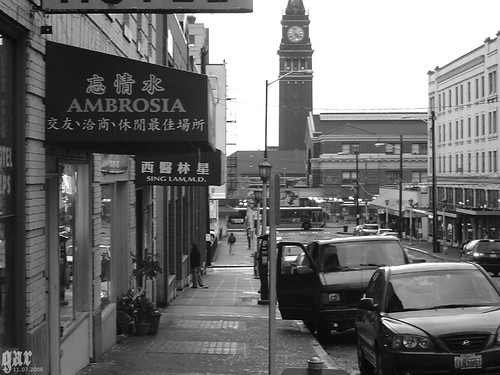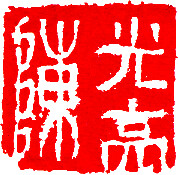|
Sunday, November 12, 2006
love for chinatown
 Typical Western media depictions of "Chinatowns" often characterize the areas as being dirty, seedy part of town inhabited by babbling, inscrutable yellow folks, an accessible Oriental zoo for non-Asians to oogle at ("Oooh, that's so exotic!") while sampling food that is often specifically to cater to a gweilo palette. Of course, what else would you expect from a society that still thinks that throwing around the word "chink" and "ching chong" are funny jokes? Most Chinese Americans (and other Asian Americans) like myself have had a sometime ambivalent attitude toward Chinatowns. On one hand, Chinatowns are another variation of America's ethnic ghettos, a place where early Asian immigrants from China, the Philippines, and Japan were confined because white people wouldn't let them live anywhere else. On the other hand, Chinatowns have been a place of community solidarity, a bastion of ethnic pride in the face of ugly racism and discrimination. In Chinatown, nobody looks down on you if you happen to be speaking a language other English... in Chinatown, you could finally eat good food from your ethnic homeland instead of being forced to dine on the poor slop that most Americans call "cuisine". In short, in Chinatown, the early Asian immigrants found a home away from home in a country that welcomed their labor, but hated their culture and labeled them as sub-human. Nowadays, with most forms of overt discrimination having been outlawed, Asian Americans have the freedom in theory to live whereever they'd like. In Seattle, successive generations of prosperous Chinese American and other Asian American families have moved further and further away from Chinatown; first to Beacon Hill, then to the rest of the eastside to places like Mercer Island and Bellevue. For myself, growing up as a 4th generation Chinese American in Seattle, I'm well aware of the strange dichotomy of weekdays living/going to school in a predominantly white suburb while during the weekends, my family would attend a Chinese American church on Beacon Hill and eat/shop in Chinatown. I always looked forward to weekends; not only was there no school, it was a chance to eat dim sum and be around people who never would make fun of because I wasn't white. My parents, who had grown up in the Bay Area as part of San Francisco and Oakland's Chinatowns, quite unintentionally instilled in me a love for Seattle's Chinatown / International District. ... Sidenote: For the best bubbletea in Seattle, go to a hole-in-the-wall joint named Ambrosia, down from the corner of King and Maynard street, across from Hing Hay Park. Current favorite: mango yogurt smoothie with tapioca. All time favorite: regular milk tea with lychee jelly. |
Comments:
bubbletea places have popped up all over seattle since i moved away 5 years ago. but i agree... ambrosia is still the best!
Post a Comment
|
in?scrip?tion (n-skrip-shun)n.
the facts.
|











